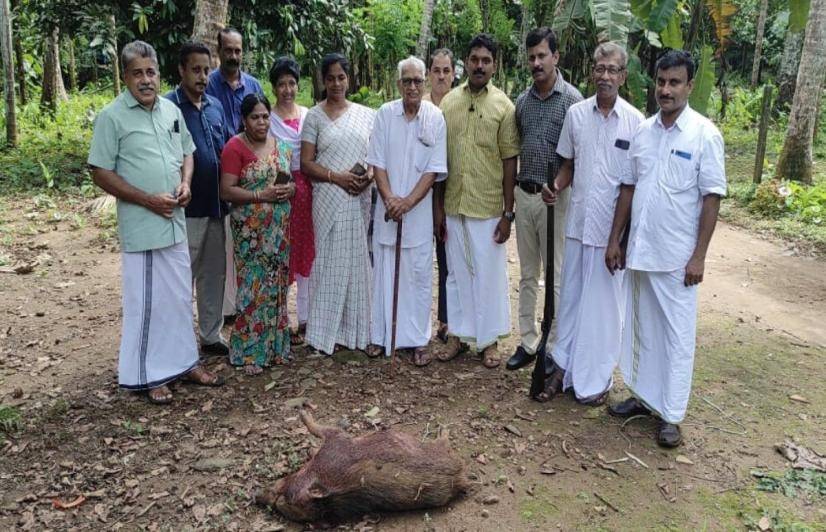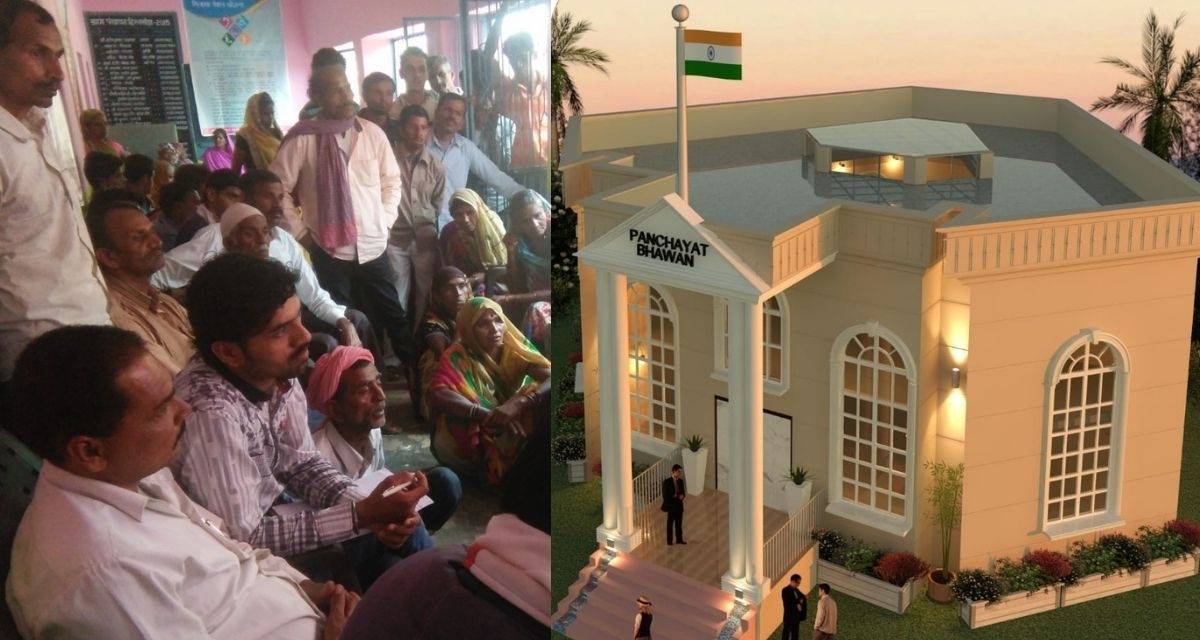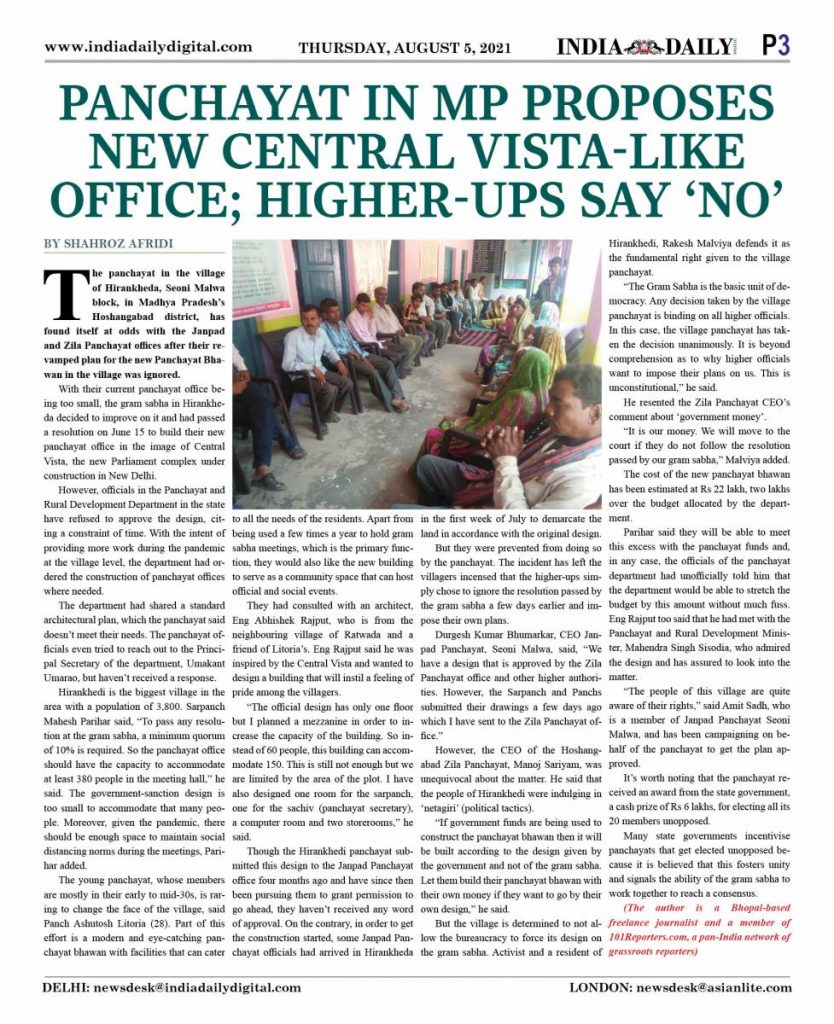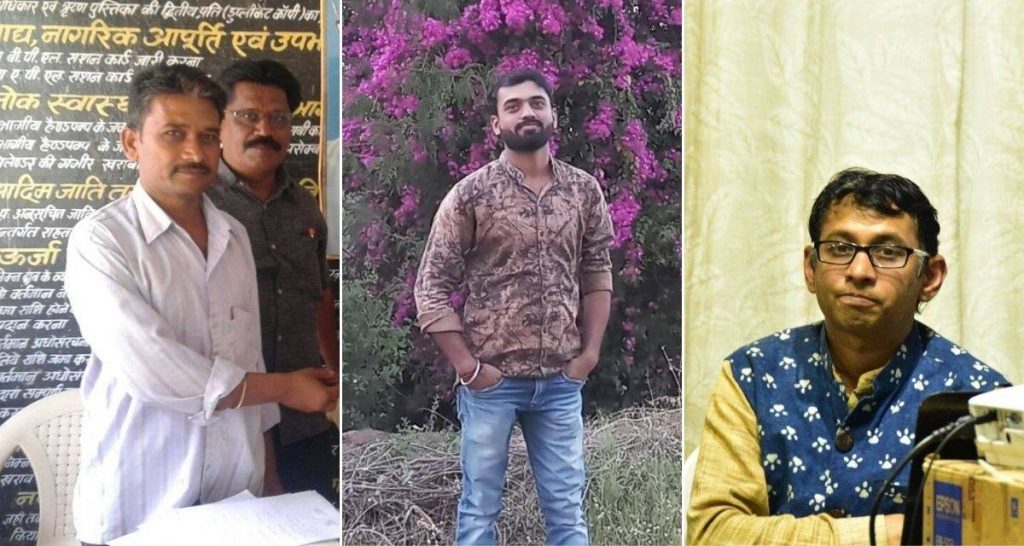While Raju’s family celebrated the licensed killing of the boar, there’s no respite for Thomas, as about 6,000 of the 9,000 households in his jurisdiction are incurring huge losses in agriculture due to wild boar attacks…reports Asian Lite News
On June 1, around 10.30 p.m., EP Raju, a licensed gunner empanelled with the Kerala Forest and Wildlife Department, shot down a wild boar that had entered his father EP Yohannan’s farm in Kodancherry village in Kerala’s Kozhikode district, this was the first recorded incident of culling after the department empowered local self-governments to cull wild boar to curb their growing menace.
“I’m thankful to Kodancherry panchayat president Alex Thomas for granting me the requisite permission. I request all farmers to take quick action, otherwise, no crop will survive in any village located on the fringes of the forest,” said 94-year-old Yohannan.
Farmers who suspect that wild boar are attacking their farm now need to seek permission from the panchayat president, who can depute a licenced gunman to cull the animal. Earlier, the farmer had to procure this permission from the forest department, but the procedure was cumbersome and resulted in inordinate delay.
While Raju’s family celebrated the licensed killing of the boar, there’s no respite for Thomas, as about 6,000 of the 9,000 households in his jurisdiction are incurring huge losses in agriculture due to wild boar attacks.
“There are hundreds of boar here, and we have only five licenced gunmen to tackle them. I’m worried the farmers in my village will continue to incur more losses,” said Thomas. Under the new rules, he is the honorary Chief Wildlife Warden with the same powers as State Chief Wild Warden.
Panchayat heads like Thomas will see a need for more licenced gunmen, and already district collector offices, which have the authority to approve gun licences after obtaining clearances from the police as well as the revenue and forest departments, are seeing an increase in applications.
On May 25, after issuing an order to empower local bodies with culling rights, Kerala Minister of Forests AK Saseendran said, “This is a new experiment; there are bound to be some shortcomings. The government is trying to tackle the menace without violating the Wildlife Protection Act.”
A senior forest officer, on condition of anonymity, said they didn’t know the exact number of wild boar in Kerala, as no detailed survey had been conducted before the culling orders were issued. The last wild boar census was conducted in Kerala in 2011; it stood at 48,034.
Though the panchayat should bear the cost of culling, in most cases farmers might have to bear the initial costs, which is tough on those whose farms have already been affected by boar attacks, the forest officer added.
“To avoid poaching, farmers are even forbidden from selling the meat after the kill. We need to wait for at least a year before receiving feedback and rework the guidelines accordingly.”
Earlier, farmers dug trenches, erected walls and even resorted to using poison, electric traps and illegal shooting to control the menace. This often caused untoward accidents. For instance, on May 21, in Vithura gram panchayat in Thiruvananthapuram district, 57-year-old Selvaraj was electrocuted by an electric fence.
“Farmers are not resorting to illegal means anymore. I have already received more than 150 applications for culling rights,” said VS Baburaj, president of Vithura gram panchayat.
The panchayats intend to expedite the otherwise exhausting process of granting permission and connecting farmers with licenced gunmen. The applications are approved at the president’s discretion.
These applications give each farmer the standing right to ask for the culling of boar that enter their farms after they are verified as genuine by the panchayat. After this, the panchayat president can grant permission even over a phone call, deputing an available gunman for the task. Depending on the particular farmer’s financial standing, the panchayat may or may not accept the responsibility of paying the gunmen, who are compensated to the tune of Rs 1000 per culling.
Wild boar – a vermin or not?
In the past five years, wild boar attacks caused 21 deaths and 515 injuries among people. So far, the Kerala government has received 10,700 applications from farmers seeking compensation for the damages.
The compensation process, however, is laggard. According to a Kerala forest department official, around Rs 5 crore has been disbursed as compensation for crop loss against wild boar attacks in 2020-2021; Rs 3.53 crore in 2019-20; and Rs 4.6 crore in 2018-19.
According to the Wildlife Protection Act of 1972, the culling of a wild boar is a criminal offence, involving three years imprisonment so farmers are in a dilemma about the legality of culling despite panchayat sanctions.
With the rise in man-animal conflicts, farmers’ organisations have been pressuring the Centre to declare wild boar as vermin.
“There are strict guidelines for declaring an animal ‘vermin’. They cannot be declared vermin unless they’re dangerous across the country, which wild boar are not,” said Bhupendra Yadav, Union Minister for Environment, Forest and Climate Change, on the sideline of the Anil Agarwal Annual Environmental Dialogue conducted by the Centre for Science and Environment in Nimli, Rajasthan. This was before the May 25 announcement in Kerala. He added that he was aware of the situation in Kerala, but declaring boar vermin would make them vulnerable to poaching across India.
According to P Basheer, a forest officer from Edathara sector in Kozhikode, who had overseen the first culling operation in Kodancherry village: “On the pretext of culling to save life and crop, hunting shouldn’t be permitted. We are duty-bound to ensure that after the culling, the carcass is buried properly.”
Culling not a panacea
A section of environmentalists and animal rights activists, including Maneka Gandhi, has, however, protested this move by the Kerala government.
“Wild boar is the only species that consumes bracken, an undergrowth that prevents seedlings from growing by blocking sunlight in forest,” Gandhi explained. “Besides, its habit of constantly scratching the forest floor clears the ground for fresh growth. The demand to cull wild boar was made by hunters and others who stood to gain monetarily through poaching, not by agriculturalists.”
The Kerala forest minister unequivocally denied these allegations, pointing out that the decision was aimed at finding a permanent solution for farmers and people residing on forest fringes, and that the government wouldn’t allow hunting.
However, farmers claimed the problem was not restricted to wild boar alone. P Vijayalakshmi, a farm woman in Kulappully village in Palakkad district, said, “I have suffered financial losses of more than Rs 1 lakh in a year due to animal attacks. Not only wild boar but also monkeys and peacock have been regularly raiding my crops. I can cull wild boar, but what about the others? Does the law permit culling them, too?”
People living on the fringes of forests have been facing attacks from wild elephant, tiger, leopard, monkey, bison and peacock on the regular. According to the Kerala Forest and Wildlife Department, 1,048 people lost their lives to animal attacks in the past decade.
Shrinking forests and increasing urbanisation have forced the animals, including wild boar, out of the woods. They enter farmlands in search of plantains and tapioca. State-controlled culling may not offer any permanent solution unless measures are taken to preserve the forests and fight climate change.
“Water and food scarcity due to the degradation of forests and climate change are the main causes for man-animal conflict. Infact, we cannot find a permanent solution without addressing this root cause. But I support culling for the time being because no other option exists for farmers to save their lives and farms,” said Dr VS Vijayan, former chairman of the Kerala State Biodiversity Board.
“Culling may bring temporary relief, but it cannot weed out the problem entirely,” said Vijayalakshmi.
ALSO READ-In this panchayat in Wayanad, tree banking scheme aims carbon neutrality




